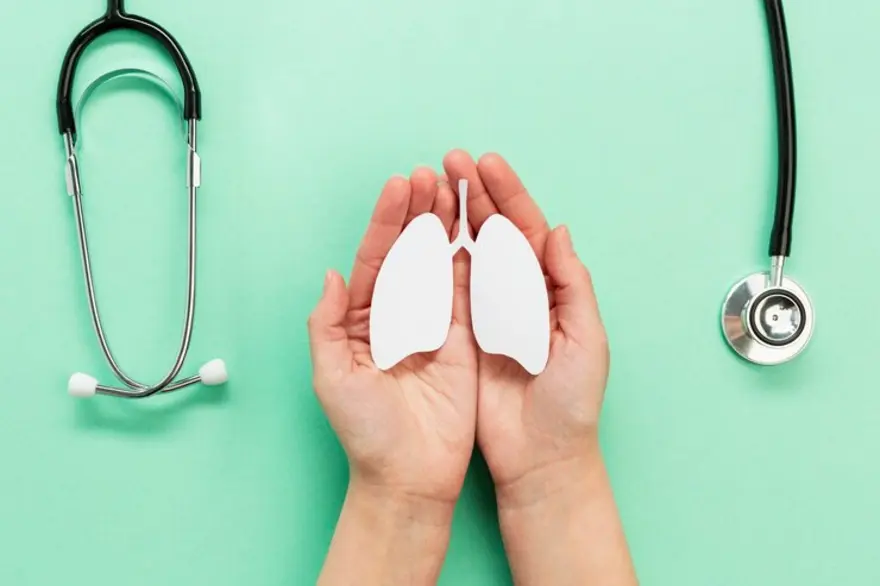Preventive Healthcare
Everything You Should Know About Shingles
497 Views
0

What is Shingles?
Shingles is a viral infection that can cause a rather painful skin rash that appears red, dark pink, dark brown, or purplish and can occur on one side of your body. Shingles usually look like a single stripe of red blisters along the right or left side of your torso. It is not life-threatening but can be very painful and lead to complications if left untreated. Shingles is also known as herpes zoster.
Where Do Shingles Come From?
Shingles occur due to the reactivation of the varicella-zoster virus that is already present in the body when you experience chickenpox as a child. Even though you can overcome chickenpox and its physical signs, this virus remains within the body and can reoccur as shingles as an adult.
Who is at Risk of Getting Shingles?
Individuals with weakened immune systems are more likely to suffer from shingles. This includes those:
- With weak immune symptoms
- Those who are over 50 years of age
- Who has suffered a recent illness
- Experiencing extreme physical or mental trauma
- Under stress
Can You Get Shingles More Than Once?
Contrary to popular belief, you can get shingles more than once. However, you will not get the shingles rash in the same place if you get shingles again.
What Causes Shingles?
One of the leading shingles causes is the varicella-zoster virus, which also causes chickenpox.
What are the Symptoms of Shingles?
Some early shingles symptoms include:
- Chills
- Fever
- Headache
- Sensitivity to light
- Stomach upset
- Feeling tired
Secondary shingles symptoms include:
- Redness on your skin in the affected area
- A raised rash in a small region of your skin
- Mild to severe pain in the affected area
- A tingling, burning, or itching feeling on your skin
What are the Stages of Shingles?
Shingles can last anywhere between three and five weeks. Once the varicella-zoster virus is reactivated, you may feel the first signs of shingles like.
- Burning sensation
- Tingling
- Itchiness
- Numbness
- Fever and chills
- Body aches
- Light sensitivity
- Unusual tiredness
This is also known as the pre-eruptive stage. Shingles can develop on one side of your body, most commonly around the waist, chest, or back.
Within five days of the reactivation of the shingles virus, you may see the appearance of a red rash; this is the acute eruptive stage of shingles. Tiny groups of fluid-filled, oozing blisters appear in the area affected with shingles, and you may experience flu-like symptoms, including headaches, fatigue, and fever.
Ten days after the shingles virus, these blisters dry and form scabs similar to chickenpox ones. These scabs usually clear out after a few weeks, but you may still experience pain even after they clear.
Is Shingles Contagious?
The National Health Services states that shingles are not contagious. Still, the virus that causes shingles can spread from one person to another and cause chickenpox if the individual has not previously had the condition.
The varicella-zoster virus spreads when a healthy individual comes in contact with an oozing blister that appears in shingles. To prevent this, keep the area of the shingles rash clean and covered. If you touch a blister, it is best to wash your hands.
How is Shingles Diagnosed?
The primary care physician diagnoses shingles based on how the rash is distributed throughout the body. Shingles blisters may appear as a band around one side of the body. Scrapings of the rash or a swab of the fluid from the blisters can be sent to the laboratory for a Polymerase Chain Reaction (PCR) test to confirm the shingles diagnosis.
How is Shingles Treated?
There is no known cure for shingles, but your doctor will prescribe medicines to manage the symptoms of the disease and help prevent complications.
Medication
Shingles can be managed with two types of medications: antiviral and over-the-counter medications.
Antiviral medicines help ease the discomfort of shingles and stop the shingles symptoms, especially if the shingles treatment is within 72 hours of the appearance of shingles symptoms. These medicines include Acyclovir, Famciclovir, or valacyclovir.
Over-the-counter medicines like acetaminophen and ibuprofen help with shingles treatment and relieve the pain caused by shingles. If you develop a bacterial infection due to the shingles rash, your doctor may also prescribe antibacterial drugs or anti-inflammatory medicines.
What are the Complications of Shingles?
While shingles itself is painful and causes irritation, if left untreated, this condition can cause complications like:
- Eye damage if the rash or blister is too close to the eye
- Bacterial infection in the skin from open blisters
- Pneumonia
- Ramsay Hunt syndrome, if the shingles affect the nerves in the head, it also results in facial paralysis or hearing loss.
- Inflammation of the spinal cord causes meningitis or encephalitis.
Is a Vaccine Available to Prevent Shingles?
Currently, there are two shingles vaccines available in India. One is Zostavax, a live-attenuated vaccine used for adults 50 years or older. The second is Shingrix, a recombinant vaccine that has shown to be over 90% effective in preventing shingles and postherpetic neuralgia.
How to Prevent Shingles?
Getting the shingles vaccine is essential for shingles prevention. However, even if you have taken the vaccine, there is still a chance that you can get shingles.
FAQ's
What usually triggers shingles?
When the dormant varicella-zoster virus gets triggered, it can cause shingles or herpes zoster. This often happens when the immune system is compromised. Other possible shingles triggers include stress, cancer treatment, HIV, organ transplant, taking immunosuppressants, or other medical reasons for reduced immunity.
What are the first signs of shingles?
Pain and a burning sensation on one side of your body are usually the first shingles symptoms.
Is shingles airborne?
The virus varicella-zoster, which is the cause of both shingles and chickenpox, is an airborne virus. The virus can spread if an individual with chicken pox or shingles sneezes or coughs around you or even shares a drinking glass or eating utensil. It can also spread by contact with the virus.
Is shingles painful?
The pain level experienced when an individual gets shingles can differ from low to extreme. Most people may only experience mild shingles symptoms, like tingling or itchiness of the skin, while others may experience pain without developing a rash.
What is the difference between shingles and hives?
The main difference between shingles and hives is the cause. The varicella-zoster virus is the main shingles cause, while hives result from an allergic reaction to something in the environment, a medication, or food.
Conclusion
Shingles/herpes zoster is a condition that is caused by the chickenpox virus varicella-zoster. It can cause a painful, red rash with a burning sensation. This rash may appear on different body parts like the torso, neck, or face. Regular checkups and diagnostic tests can help you maintain your health. Metropolis Labs offers a wide range of tests and health packages to help you take preventive measures to maintain good health.
 Home Visit
Home Visit Upload
Upload













1701259759.webp)









 WhatsApp
WhatsApp